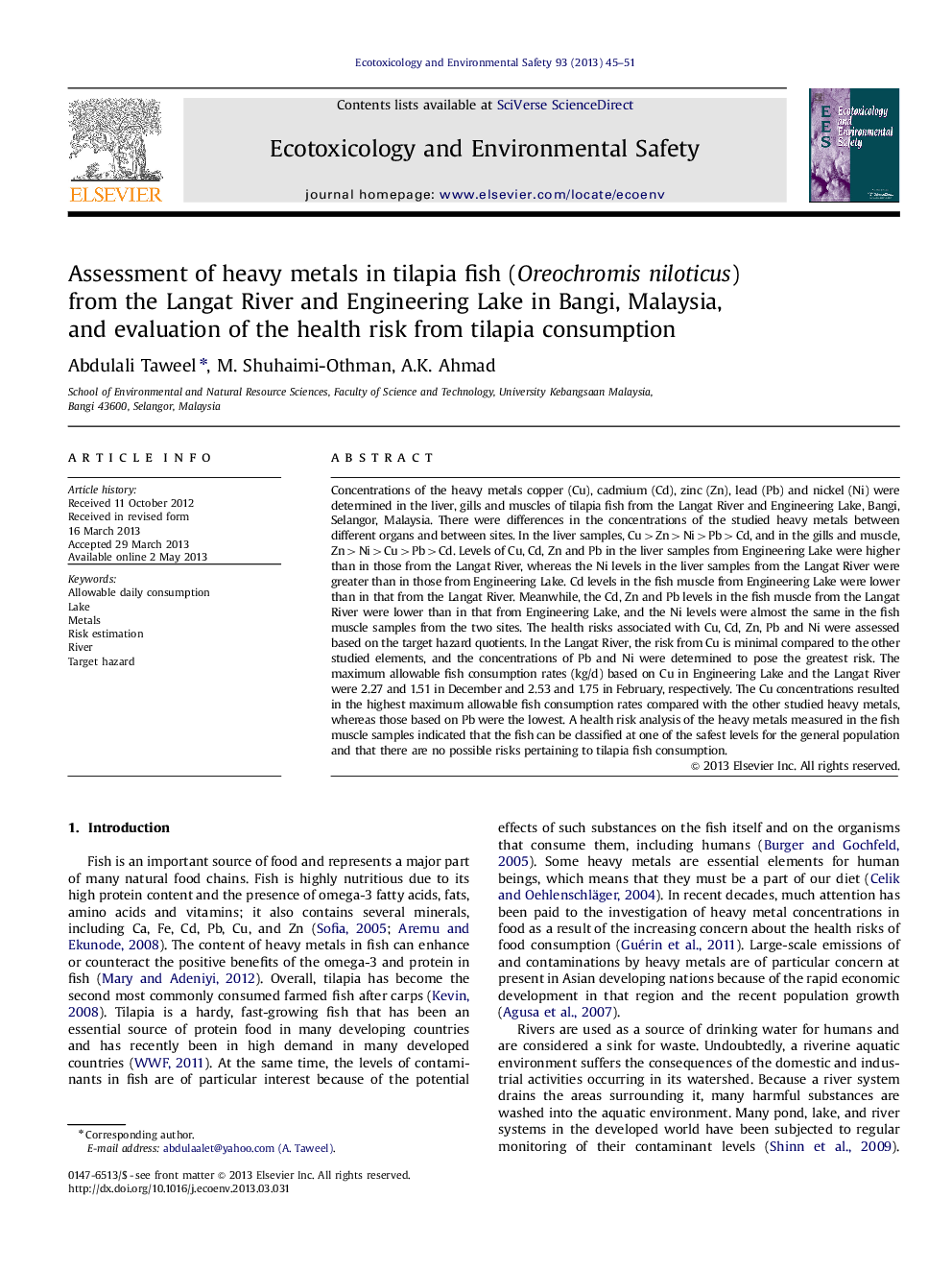| کد مقاله | کد نشریه | سال انتشار | مقاله انگلیسی | نسخه تمام متن |
|---|---|---|---|---|
| 4420265 | 1618970 | 2013 | 7 صفحه PDF | دانلود رایگان |

• Analysis of the concentrations of some heavy metals in both sites.
• Evaluation of health risks from tilapia consumption in the study area.
• Comparison of the levels of heavy metals in tilapia fish with international standards.
• Maximum allowable fish consumption rate in Engineering Lake and the Langat River.
Concentrations of the heavy metals copper (Cu), cadmium (Cd), zinc (Zn), lead (Pb) and nickel (Ni) were determined in the liver, gills and muscles of tilapia fish from the Langat River and Engineering Lake, Bangi, Selangor, Malaysia. There were differences in the concentrations of the studied heavy metals between different organs and between sites. In the liver samples, Cu>Zn>Ni>Pb>Cd, and in the gills and muscle, Zn>Ni>Cu>Pb>Cd. Levels of Cu, Cd, Zn and Pb in the liver samples from Engineering Lake were higher than in those from the Langat River, whereas the Ni levels in the liver samples from the Langat River were greater than in those from Engineering Lake. Cd levels in the fish muscle from Engineering Lake were lower than in that from the Langat River. Meanwhile, the Cd, Zn and Pb levels in the fish muscle from the Langat River were lower than in that from Engineering Lake, and the Ni levels were almost the same in the fish muscle samples from the two sites. The health risks associated with Cu, Cd, Zn, Pb and Ni were assessed based on the target hazard quotients. In the Langat River, the risk from Cu is minimal compared to the other studied elements, and the concentrations of Pb and Ni were determined to pose the greatest risk. The maximum allowable fish consumption rates (kg/d) based on Cu in Engineering Lake and the Langat River were 2.27 and 1.51 in December and 2.53 and 1.75 in February, respectively. The Cu concentrations resulted in the highest maximum allowable fish consumption rates compared with the other studied heavy metals, whereas those based on Pb were the lowest. A health risk analysis of the heavy metals measured in the fish muscle samples indicated that the fish can be classified at one of the safest levels for the general population and that there are no possible risks pertaining to tilapia fish consumption.
Journal: Ecotoxicology and Environmental Safety - Volume 93, 1 July 2013, Pages 45–51